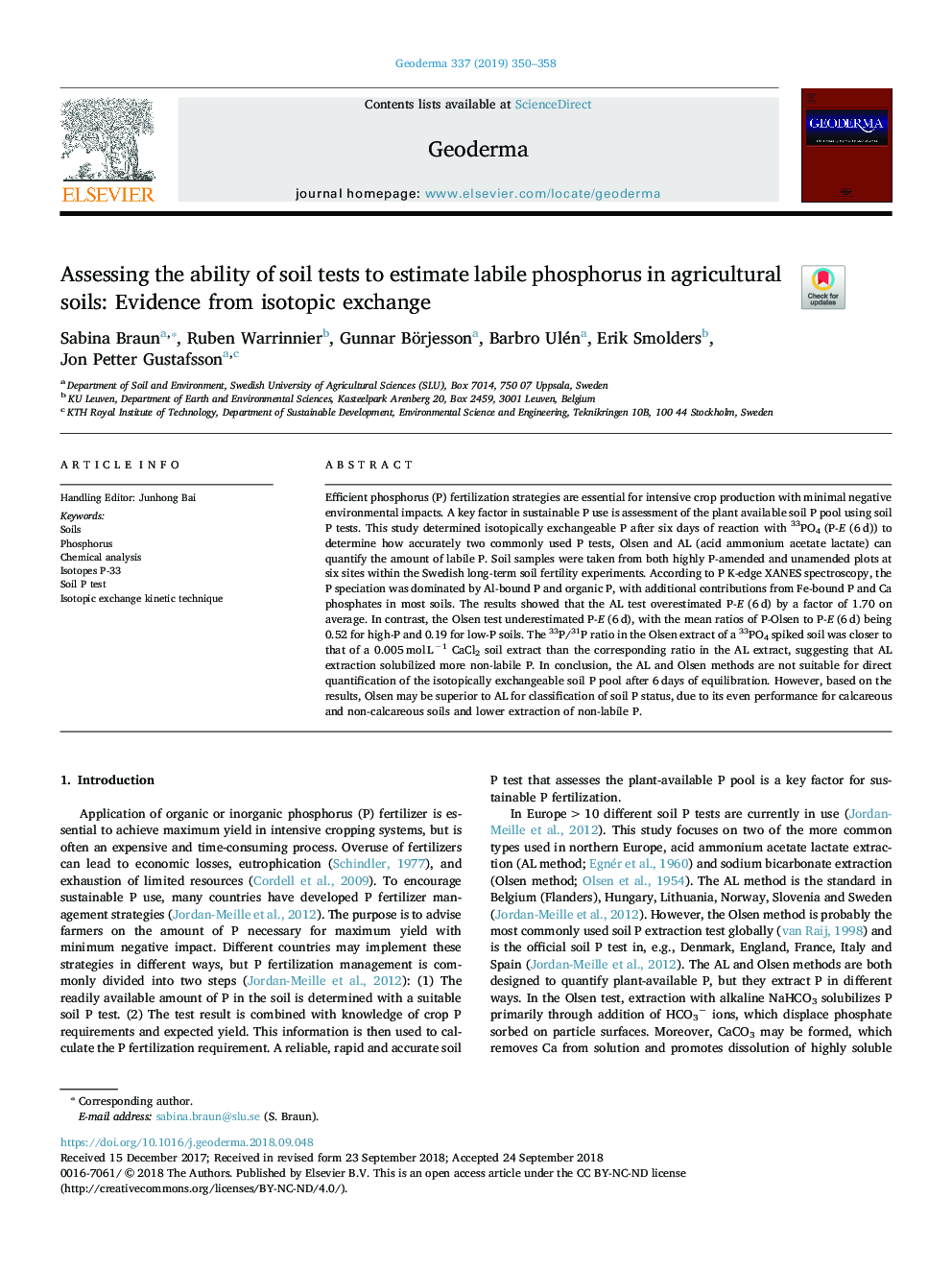| Article ID | Journal | Published Year | Pages | File Type |
|---|---|---|---|---|
| 11024788 | Geoderma | 2019 | 9 Pages |
Abstract
Efficient phosphorus (P) fertilization strategies are essential for intensive crop production with minimal negative environmental impacts. A key factor in sustainable P use is assessment of the plant available soil P pool using soil P tests. This study determined isotopically exchangeable P after six days of reaction with 33PO4 (P-E (6â¯d)) to determine how accurately two commonly used P tests, Olsen and AL (acid ammonium acetate lactate) can quantify the amount of labile P. Soil samples were taken from both highly P-amended and unamended plots at six sites within the Swedish long-term soil fertility experiments. According to P K-edge XANES spectroscopy, the P speciation was dominated by Al-bound P and organic P, with additional contributions from Fe-bound P and Ca phosphates in most soils. The results showed that the AL test overestimated P-E (6â¯d) by a factor of 1.70 on average. In contrast, the Olsen test underestimated P-E (6â¯d), with the mean ratios of P-Olsen to P-E (6â¯d) being 0.52 for high-P and 0.19 for low-P soils. The 33P/31P ratio in the Olsen extract of a 33PO4 spiked soil was closer to that of a 0.005â¯molâ¯Lâ1 CaCl2 soil extract than the corresponding ratio in the AL extract, suggesting that AL extraction solubilized more non-labile P. In conclusion, the AL and Olsen methods are not suitable for direct quantification of the isotopically exchangeable soil P pool after 6â¯days of equilibration. However, based on the results, Olsen may be superior to AL for classification of soil P status, due to its even performance for calcareous and non-calcareous soils and lower extraction of non-labile P.
Keywords
Related Topics
Physical Sciences and Engineering
Earth and Planetary Sciences
Earth-Surface Processes
Authors
Sabina Braun, Ruben Warrinnier, Gunnar Börjesson, Barbro Ulén, Erik Smolders, Jon Petter Gustafsson,
